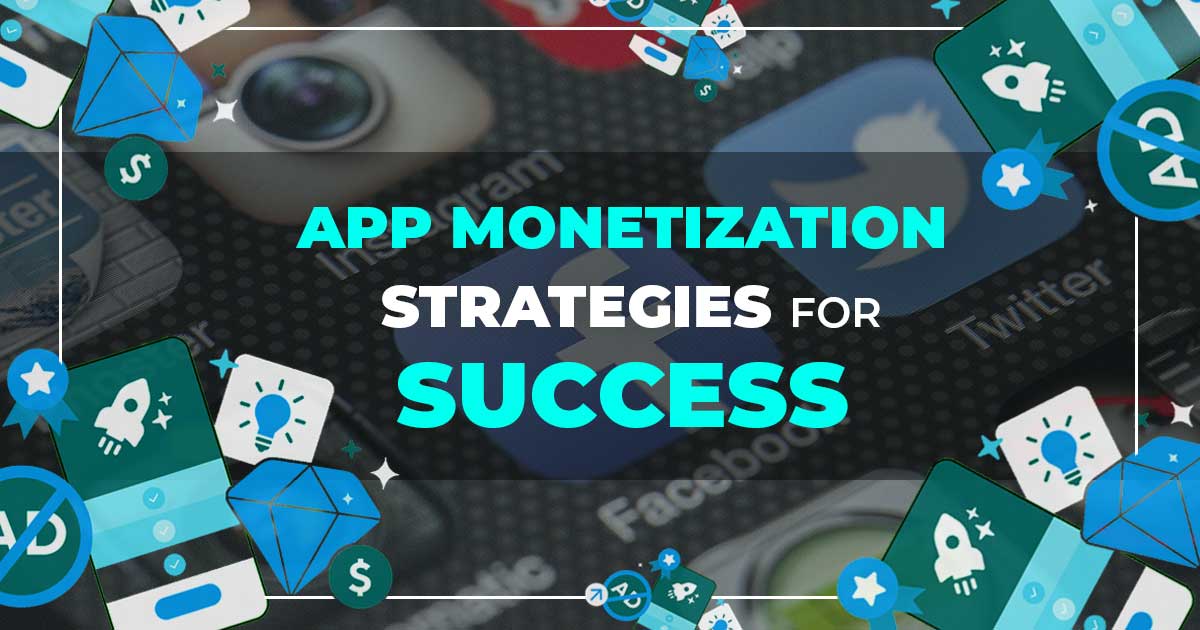Designing a successful mobile App is an achievement but App Monetization requires skills and tricks. Turning that App into a sustainable source of income is a whole different competition. In this blog, we will explore App monetization strategies in simple and easy-to-understand language to help you navigate this exciting yet difficult aspect of App development. So let’s explore and learn how to make your App not just famous but also profitable.
Understanding App Monetization
Before we get into strategies, let’s understand what App monetization is. App monetization is the process of generating revenue from your mobile Application. Essentially, it’s about making money from your hard work and dedication to creating an App that people love to use.
Top 12 App Monetization Strategies
Here are some strategies for app monetization:
- In-App Advertising: In-app advertising is one of the most widely used methods for monetizing apps. You’ve likely experienced this when using free apps, where ads pop up while you’re playing a game or using a utility app. App developers earn money through impressions (how many times the ad is displayed) and clicks on these ads.
- Premium Model: Another popular strategy is the freemium model. This approach involves offering a basic version of your App for free and then attracting users to upgrade to a premium or paid version for additional features, functionality, or content. This can be a powerful way to influence a wide user base while still generating revenue from those ready to pay for extra perks.
- In-app purchases: In-app purchases (IAPs) are a clever way to monetize your App. This strategy allows users to buy virtual goods, services, or enhancements within the App. Games, for example, often sell in-game currency, power-ups, or cosmetic items. Users are willing to pay for these items to enhance their App experience.
- Subscription Models: Subscriptions are gaining popularity in-app monetization. Apps like streaming services, news outlets, and productivity tools often offer monthly or yearly subscriptions. This model provides a nonstop income stream as long as users find value in your App’s ongoing services.
- Affiliate Marketing: Affiliate marketing is when you promote other companies’ products or services within your app and earn a commission for individual sales generated through your referral. This can work well if your app has a specific niche audience that aligns with certain products or services. Do some research to choose the best affiliate marketing platforms for this, and you will get a high commission.
- Sponsorships and Partnerships: Collaborating with brands or companies that align with your App’s content can be profitable. You can offer sponsorships or partnerships to these commodities, promoting their products or services in exchange for financial support.
- Data Monetization: Data monetization involves collecting and anonymizing user data within your App and then selling this data to third parties for market research and analytics. It’s important to handle user data responsibly and with transparency to maintain user trust.
- Crowdfunding: If your App has a passionate user base, consider crowdfunding through platforms. Your users can support your App financially in exchange for exclusive tips or early access to new features.
- Offer a White Label Solution: If your App offers a unique and valuable feature, you can sell it to other businesses or developers as a white-label solution. This approach allows them to use your App’s core functionality within their projects.
- Cross-Promotion: If you have multiple Apps in your portfolio, cross-promotion can be beneficial. Promote your other Apps to your current users through ads that appear when one downloads some other App or banners within your existing Apps.
- Optimize User Experience: No matter which monetization strategy you choose, it’s crucial to prioritize the user experience. Annoying, intrusive ads or aggressive sales tactics can drive users away. Strive for a balanced approach that respects your users’ needs and preferences.
- Analytics and Testing: The Path to Improvement: To maximize your App’s monetization potential, regularly analyze user behavior and test different strategies. A/B testing can help you understand what works best for your App and audience.
Conclusion
In conclusion, App monetization is a sophisticated journey that involves finding the right strategy for your App and user base. It’s not just about making money; it’s about providing value to your users while sustaining your App’s growth.
Never forget that there is not a single perfect strategy for monetizing Apps. You may be required to experiment with various strategies to see what resonates best with your audience. But with the right balance of user-centric design and revenue generation, you can turn your App into a successful and profitable venture.
So, go ahead and explore these App monetization strategies, keeping your users at the heart of your decisions. By doing this you’ll not only build a revenue stream but also create a loyal user base that keeps coming back for more.
FAQs
App monetization is the process of generating revenue from a mobile Application. It involves various strategies such as in-app advertising, freemium models, and subscriptions.
In-app advertising involves displaying ads within your App. You earn capital based on advertising impressions and clicks. Ad networks like Google Ad Mob and Facebook Audience Network can help you implement this strategy.
The freemium model offers a basic version of your App for free and encourages users to upgrade to a premium version with additional features or content. This way, you attract a wide user base while generating revenue from paid upgrades.
Also Read About: How to Make a Gmail Account Without a Phone Number?




